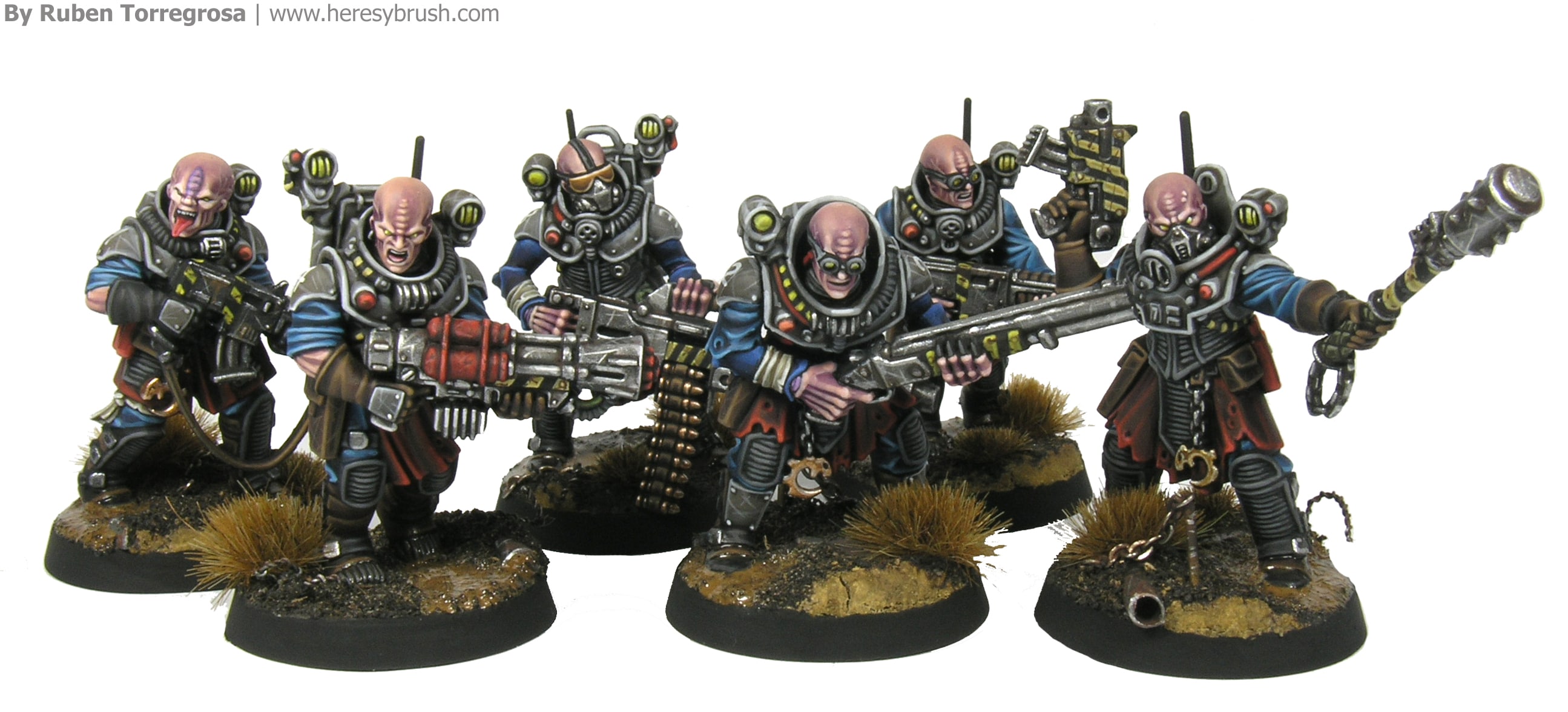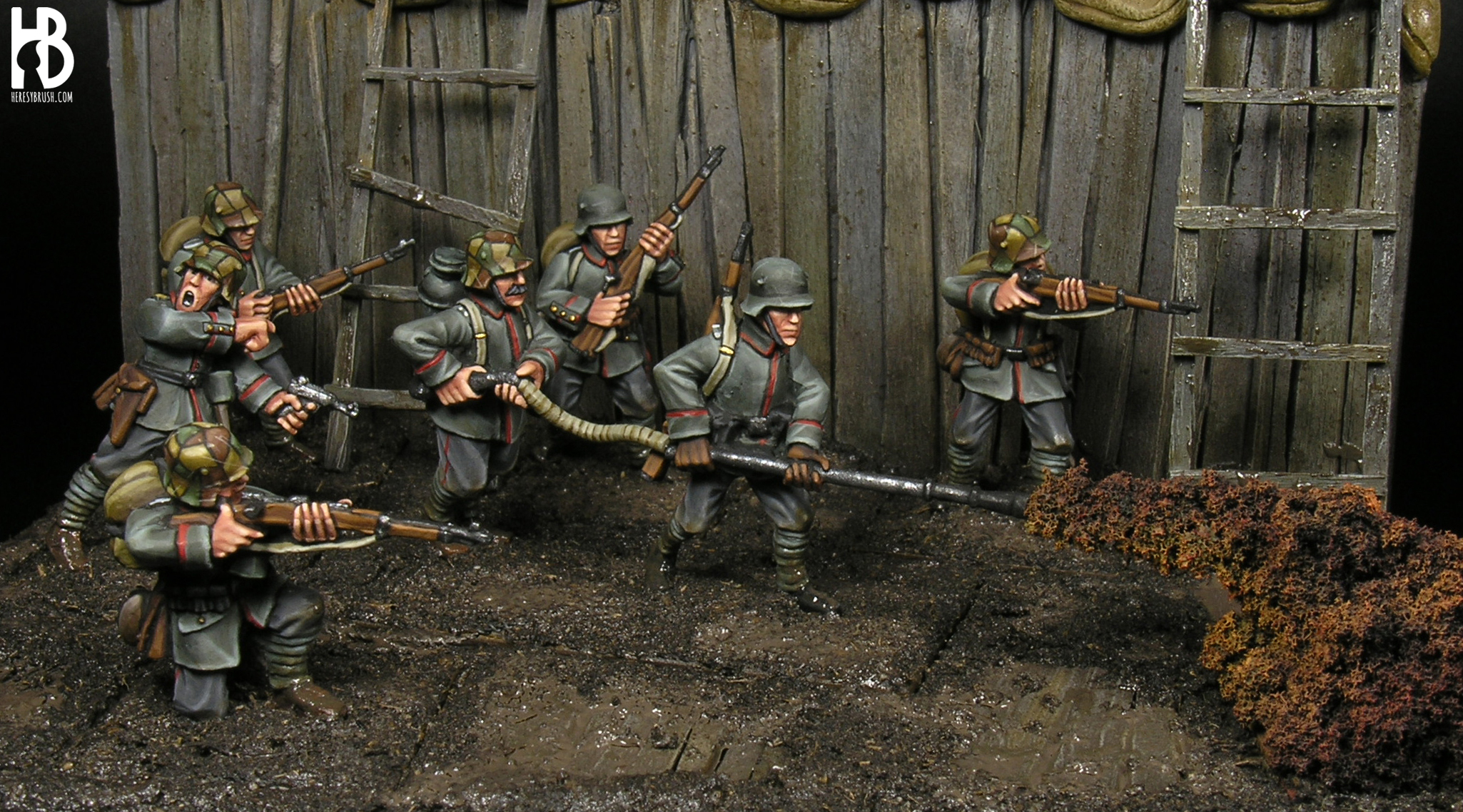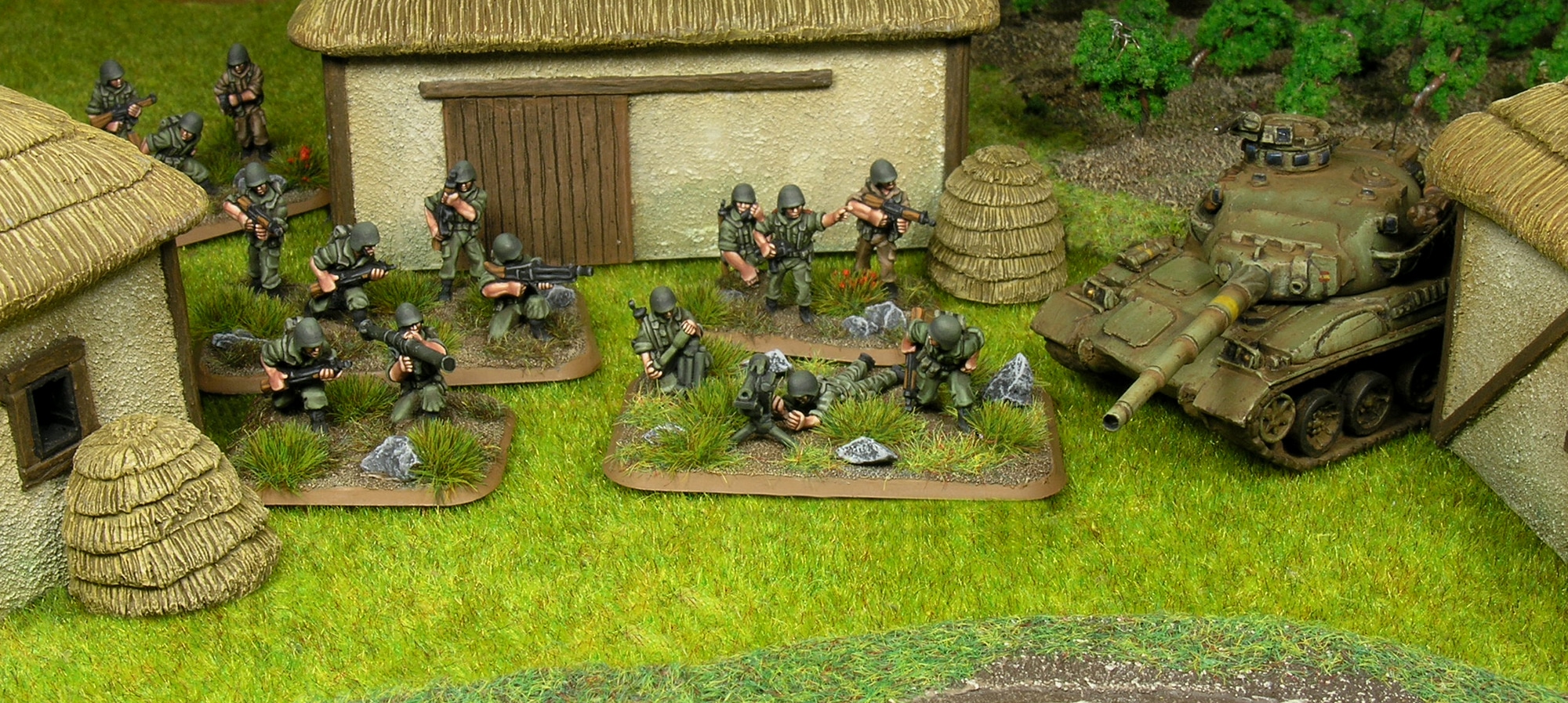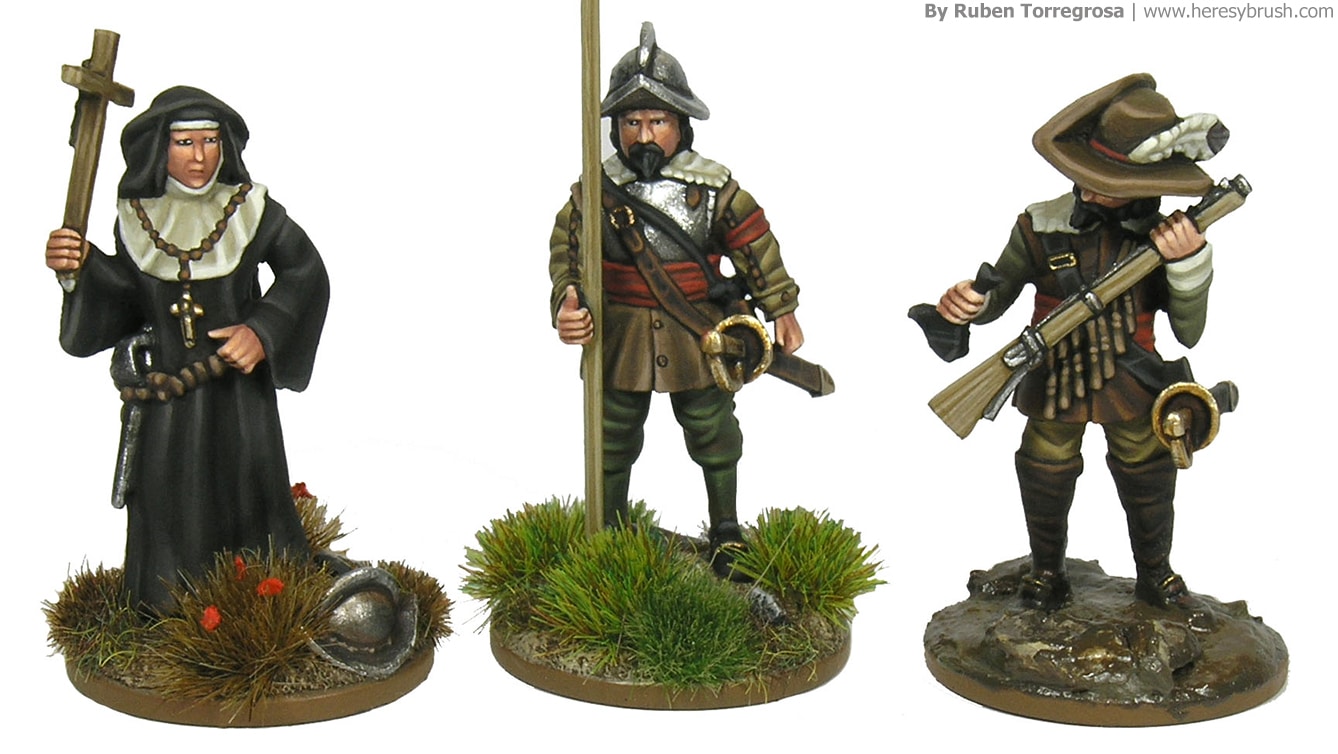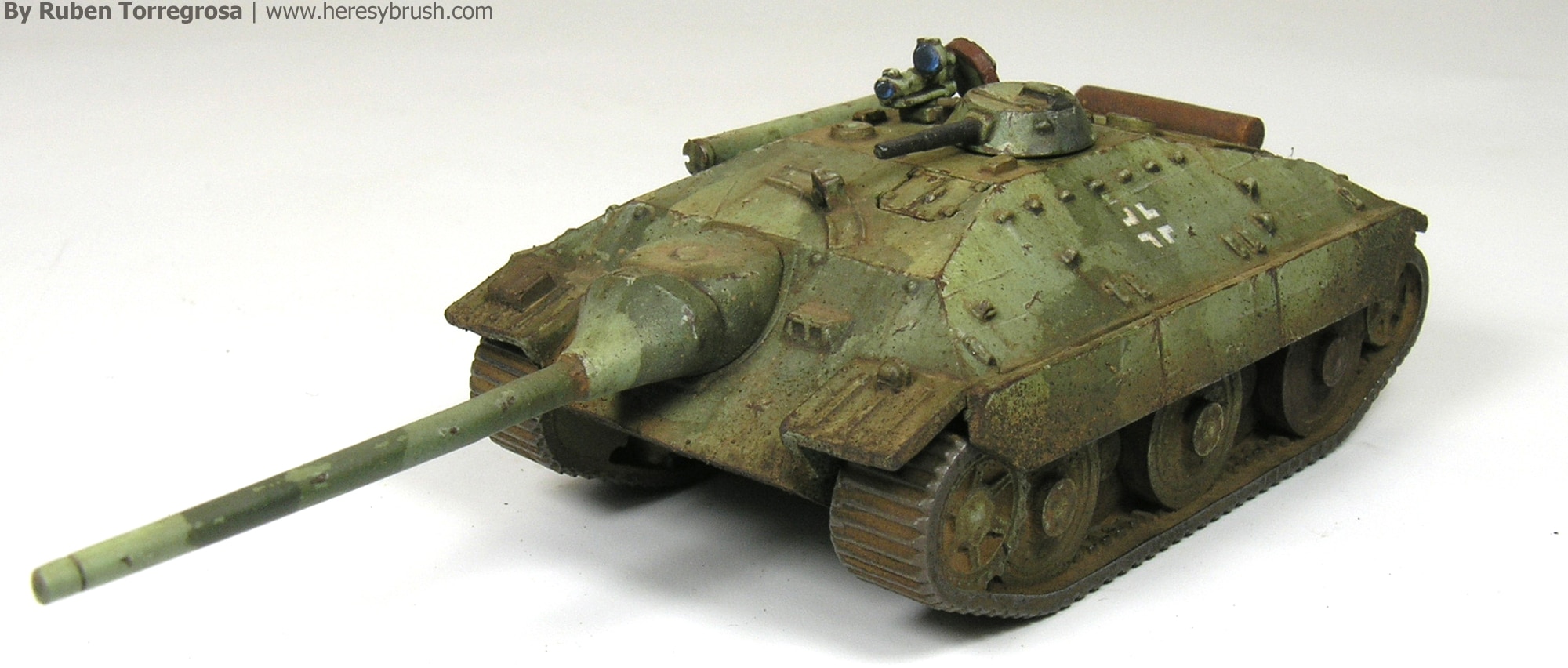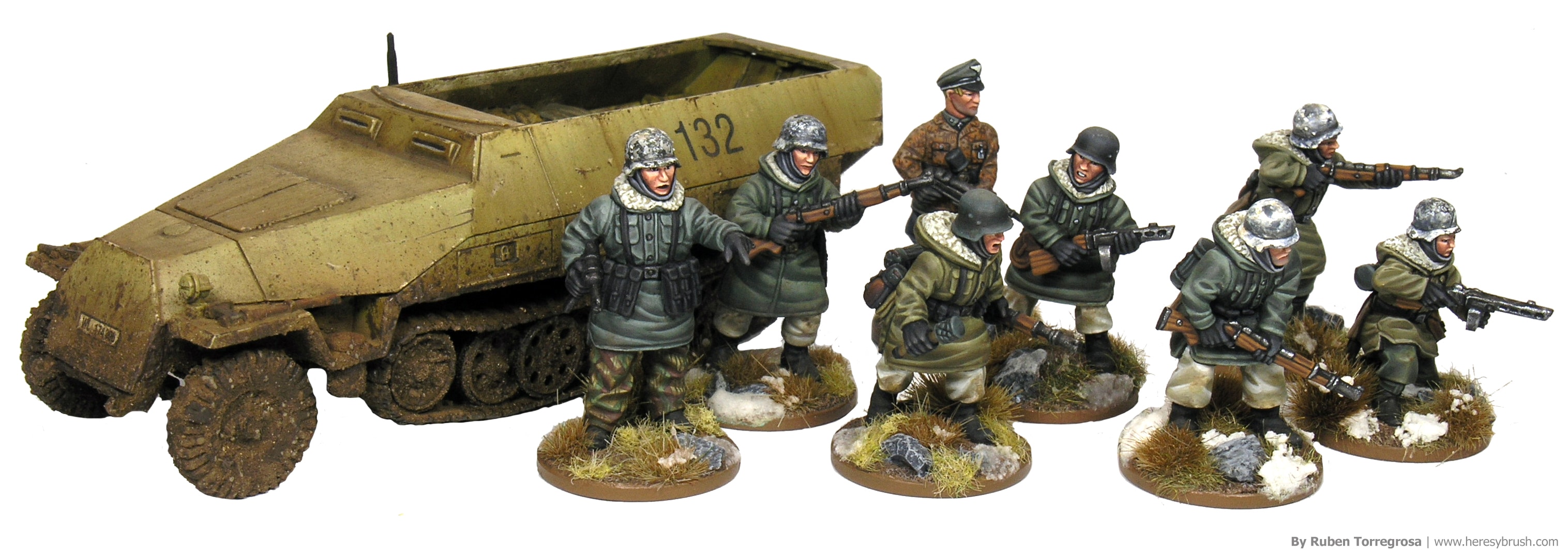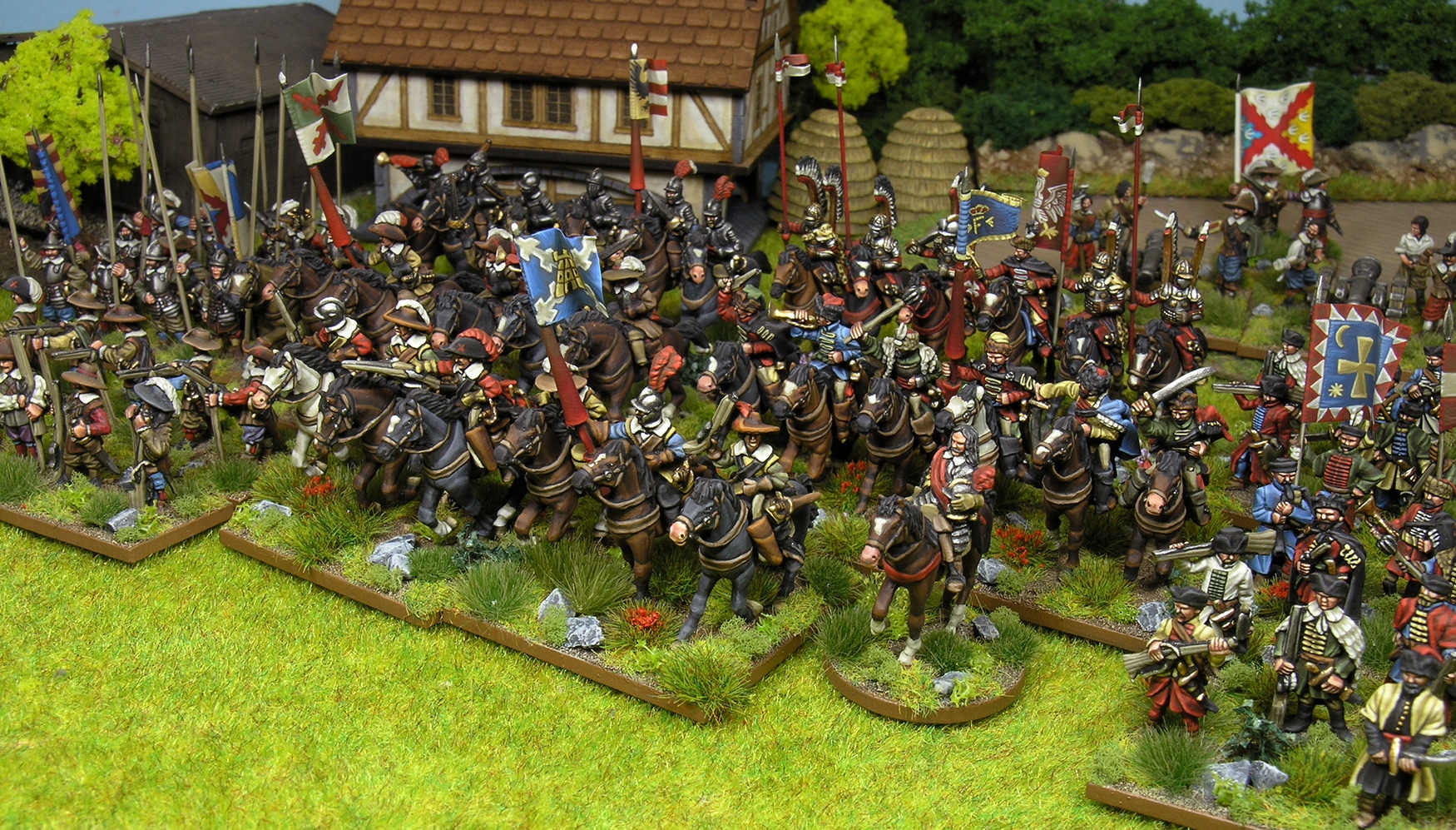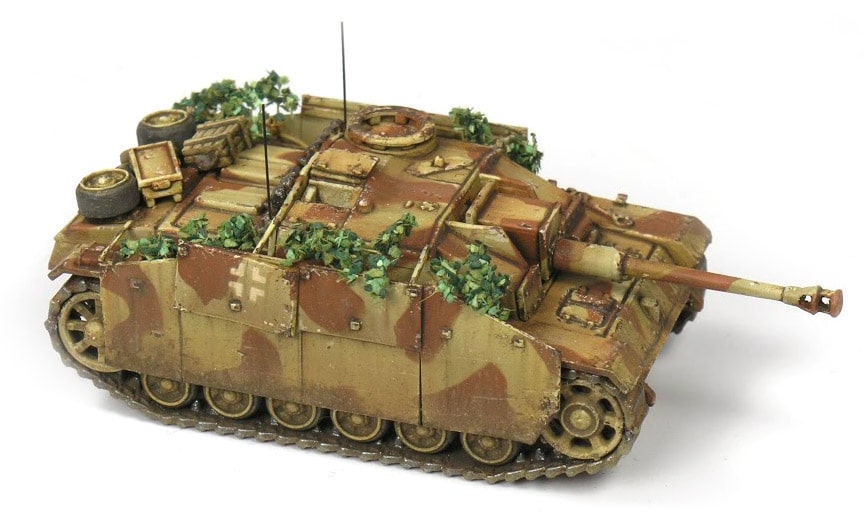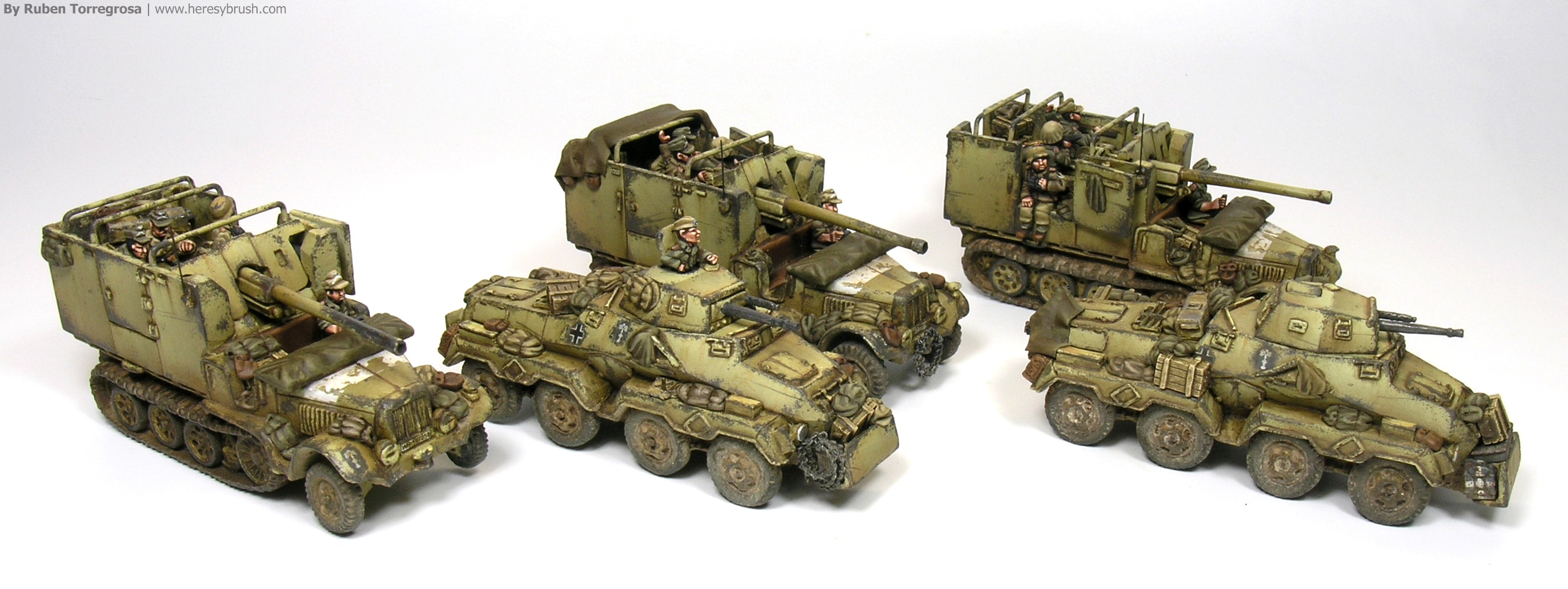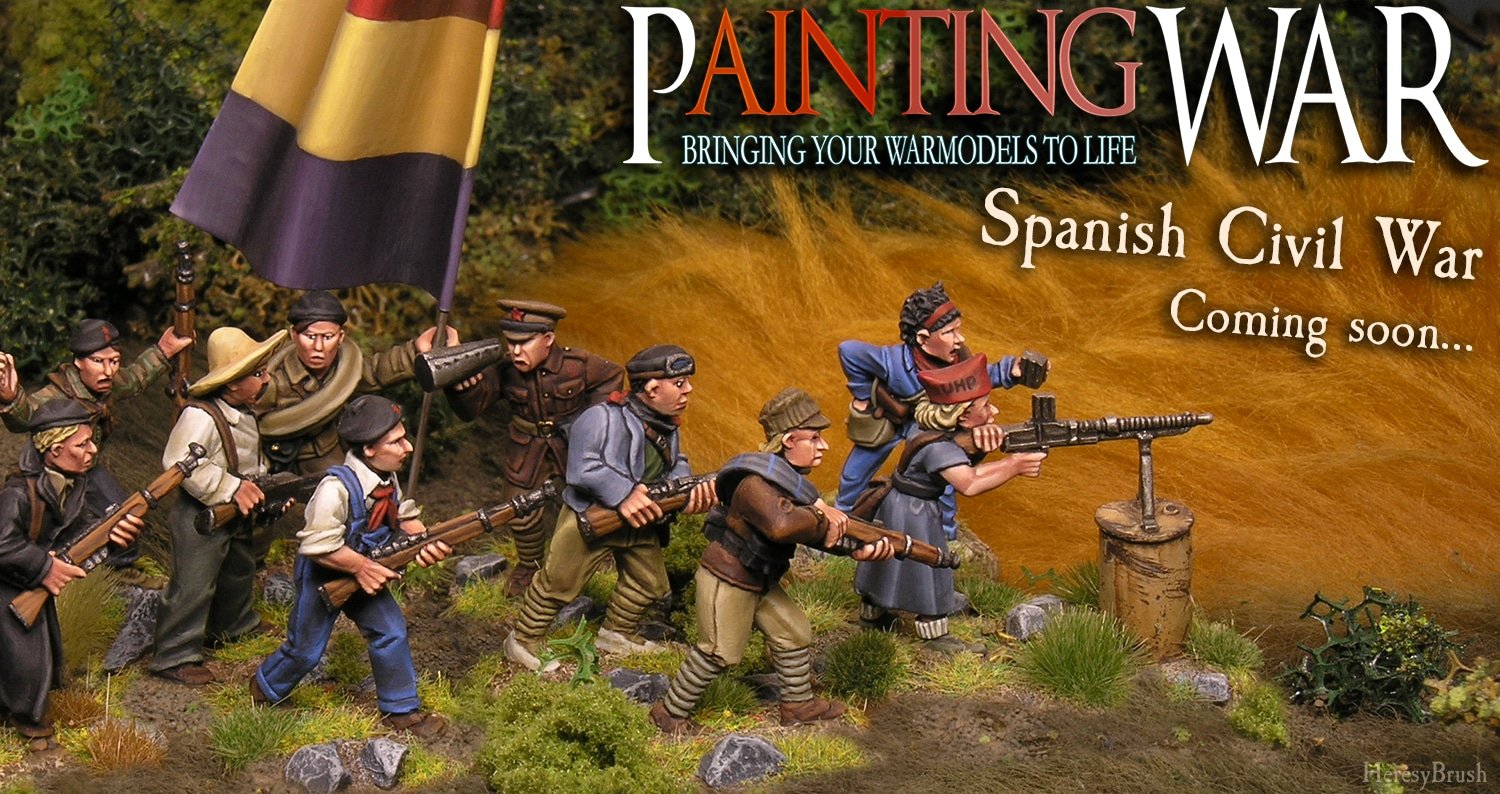During the short –but amazing- visit of the ModelBrush.com team to Finland, we found a Shadow War: Armageddon box in the local shop. This was a grateful surprise as we thought it was absolutely sold out everywhere. After splitting it among the four of us, I was the lucky guy who obtained the rule book. Since I read the first news about this game I wanted to check it out. And now I had the perfect opportunity. But I needed a warband! At this point I remember that I had plenty of Cultists miniatures at home from the Overkill box,…
Trench and mud
I had the great opportunity to prepare a diorama for the cover of Wargames Soldiers and Strategy #90, where I have represented one of the probably most charismatic scenes of the last century wars, a trench raiding. More specifically, a German counter attack to take a trench section back. I wanted to share with you some details addressing the preparation of this diorama, although you will actually find more information inside the magazine. Additionally, in this very same WSS issue I have published a complete step-by-step painting guide of the Spanish 1898 colonial army, using the new miniatures from 1898…
How to paint the 1980 Spanish army
Today, I have another painting guide to share with you. If last time we saw how to paint Spanish Tercios, this time we move a bit forward until 1980. I have ad-hoc prepared a painting guide for the new Totentanz Miniatures Kickstarter campaign which covers the 1980 Spanish army in 15mm (perfect to play Team Yankee!). In this guide I show how to paint Spanish infantry in a detailed step-by-step guide, besides a couple of color sheets; one of them dedicated to the AMX-30E tank. This time the painting guide has been prepared in collaboration with Modelbrush. Note that the…
How to paint 28mm Spanish Tercios
Today, I wanted to share with you a painting guide I prepared ad-hoc for the Kraken Released’s guys, who recently founded a Kickstarter campaign to produce an entire new range of 28mm Spanish Tercios miniatures (17th century). The painting guide, prepared in collaboration with the PaintingWar magazine’s crew, is divided in two sections. The former contains a step-by-step painting guide showing how to paint a pikeman (how to paint clothes, metal parts, skin, etc); while three sheets or color carts form the latter, covering the colors needed to paint the miniature beside some historical data and painting tips (for instance,…
Painting 15mm tanks: E25 tank hunter
I painted this German tank –one of my favorites WWII tanks, although it was a prototype– two years ago. It is a E-25 tank, produced in 15mm by Khurasan Miniatures. Although I have already published similar painting guides in my blog, I think that there is always something new to learn. The main topic of this article is the combination of the hairspray technique (or chipping effect fluid) with masks to create worn tritonal camouflage. Step 1 – Preparation We remove all imperfections from the model with a modelling knife and files. Then, glue some parts such as hatches, but…
Painting uniforms
I obtained a nice feedback from the “philosophical” article I posted regarding how to paint mounted units; where instead of discussing technical issues (or “how to paint…”), I paid more attention on the question mark “why”: why we do what we do. In my opinion, painting miniatures for wargames is not only about the painting, but it is also about telling a story. And these stories might be based on the (military) history; something that is real. And therefore, we can try to reflect this reality in our tiny armies. And in this post I would like to discuss some…
Painting mounted units
I hate painting horses. It is a fact. It is repetitive and monotonous. And I have never found it fun. However, here I am; I continue painting horses (at least another almost forty for my Thirty Years War army…). And I am not going to stop because although I hate painting horses, mounted units are very impressive, aren´t they? Somehow, I would like to share with you some tips I have learnt after painting several mounted units, although I have to concede that some of them are personal opinions. But you will agree with me that is not the same…
Painting Wargame Tanks 2nd Edition
I am so happy to see that many people found interesting my book about painting 15mm (1:100) tanks and edited by AMMO of Mig Jiménez, so that a second edition has been published. Therefore, if you didn’t have the chance to buy your own copy, do it now! In the book you can go through nine painting guides from a basic level to more skilled techniques. Everything you need to paint your tiny tanks! You can find a review in the following post. And what is next? Take a look at this sneak preview 🙂
How to paint Afrika Korps vehicles
After painting two infantry platoons of Deutsche Afrika Korps for my brother, I have painted two vehicles units: three tank hunters Diana and two recon Sdkfz 232 8 rad. I wonder when he is going to start painting the rest of his army! Anyways, I wanted to share with you this simple painting guide to simulate the classical chipping effect on DAK vehicles using an easy technique. When I have a vehicle platoon in my hands, I always try to avoid the repetition and monotony. That is, whether I have three vehicles in the platoon, I will add different elements…
PaintingWAR: Spanish Civil War
Once again I am pretty happy to announce a new book: PaintingWAR: Spanish Civil War. Thanks to the Editor, Quino, and the co-workers (Rafa, Pepe, Nacho and so on) for this new oportunity. If you don’t know the line of books PaintingWAR from Proyecto Cruz, you are missing a very nice source of information. There are foor published books so far, every one focused on an army and war time (WWII and Napolonic Wars at the moment). I have the honor to sign the fifth book of the series, centred on the Spanish Civil War, and covering both the Nationalist…
